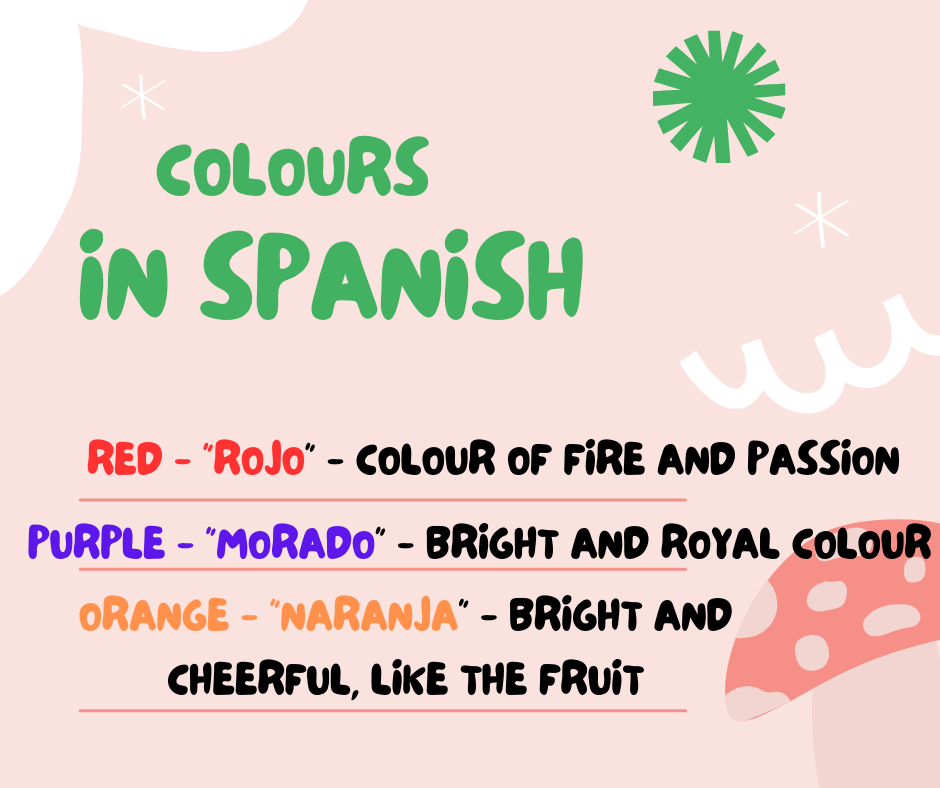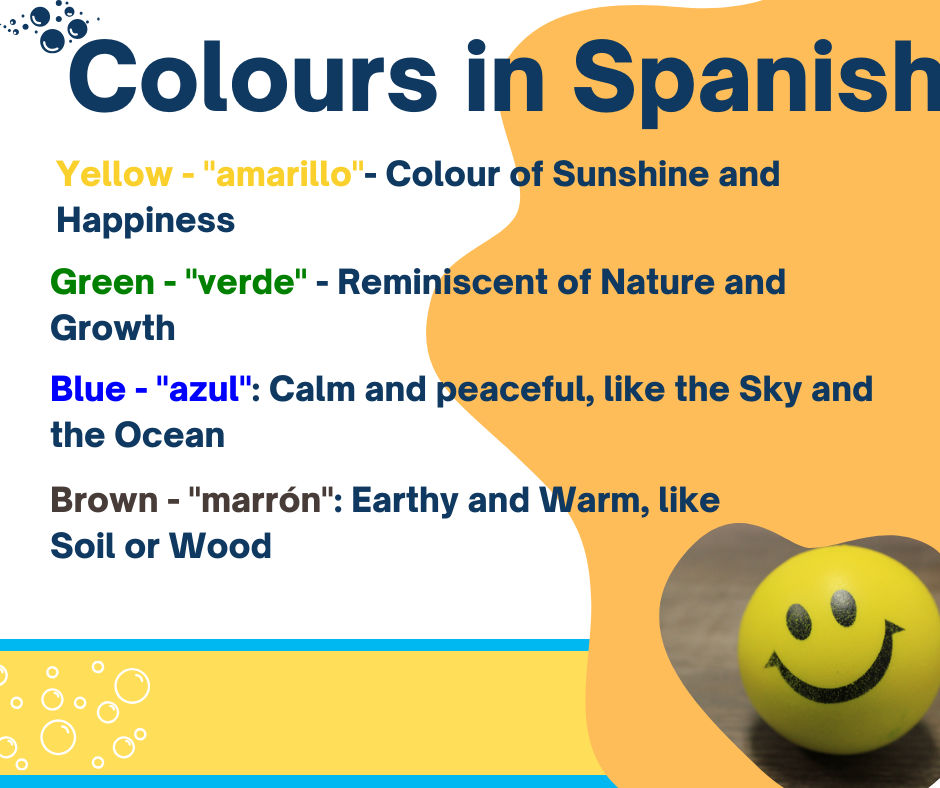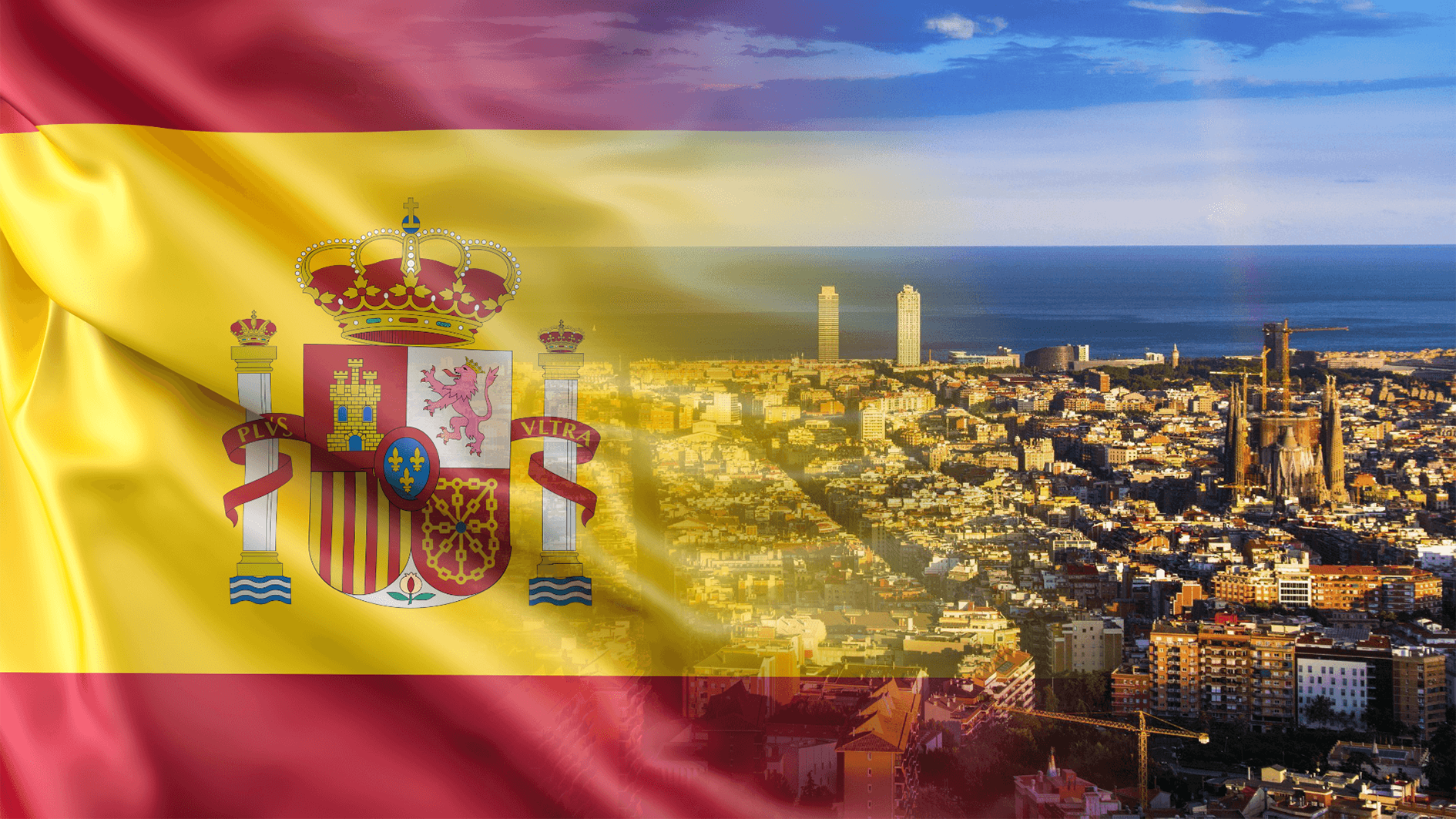The world around us bursts with vibrant colours, and Spanish offers a beautiful way to describe them. Whether you’re talking about fashion, art, or simply the sky on a lovely day, mastering the colours in Spanish will unlock a new level of expression and understanding.
In this blog post, we’ll take a closer look at colours in Spanish and how they’re used in various aspects of life, such as decoration, fashion, and art. Understanding these colours and their names will help you communicate effectively and deepen your appreciation for Spanish culture.
Join us as we discover the meanings behind each colour and how they contribute to our visual experiences.
It will make you feel more confident expressing yourself in Spanish and inspire you to incorporate these colourful expressions into everyday conversations.
Let’s dive into the fascinating world of colours in Spanish together!
Magical World of Colours
Colours hold a magical quality that transcends language barriers. In Spanish, we say “los coloures” to refer to them. Everything touched by colour is called “coloureado,” “colourido,” or simply “colour.”
Consider how objects interact with light. They absorb specific segments of the light spectrum while reflecting others. These reflected segments produce the vibrant sensations of colour that captivate our eyes and minds.
Colours aren’t just visually appealing; they’re vital components of language. They allow us to describe objects, places, animals, body parts, and more with precision and richness. From the gentle warmth of an amarillo (yellow) sunset to the calming coolness of an azul (blue) ocean, colours evoke emotions and paint vivid pictures in our minds.
Colours in Spanish
Let’s explore the top colours in Spanish:
Red – “rojo” – colour of Fire and Passion
Red” in Spanish is “rojo” [roh-ho]. It’s a primary colour, like blue and yellow. In many Hispanic cultures, it represents passion and love.
Remember, when you use “rojo” to describe something, the ending changes based on whether the thing you’re talking about is masculine or feminine.
For example:
- A red car (carro is masculine) is “un carro rojo.”
- A red flag (bandera is feminine) is “una bandera roja.”
It’s a small detail, but it helps you speak Spanish more accurately. So, whether you’re talking about a red apple or a red dress, match “rojo” with the noun’s gender.
Purple – “morado” – Bright and Royal colour
“Purple” in Spanish is “morado” [mo-ra-do]. It’s a bright and royal colour that adds a special touch to things.
You can also use “violeta” for purple, but “morado” is more common.
Here’s an interesting fact: In Spanish, “morado” means “bruise.” So, if you want to tell your Spanish-speaking friends you have a bruise on your leg, you can say, “Tengo un morado en la pierna.”
It’s astonishing how one word can mean two things. So, whether you’re talking about a purple flower or a bruise, remember the word “morado”!

Orange – “naranja” – Bright and Cheerful, Like the Fruit
“Orange” in Spanish is “naranja” [na-ran-ha]. It’s not just the colour; it’s also the name of the fruit.
For example, if you have an orange hat, you’d say, “Un sombrero naranja.” And if you’re talking about the fruit, it’s “una naranja.”
Here’s a handy tip: In Spanish, most fruits are considered feminine nouns (like “la naranja” for the orange and “la manzana” for the apple), while the trees they come from are often masculine nouns. So, the orange tree is “el naranjo.”
While this rule is not compulsory, it can be a helpful guide when learning Spanish vocabulary, especially regarding fruits and their corresponding trees. It’s a simple trick to make Spanish learning easier and more enjoyable.
Yellow – “amarillo”- Colour of Sunshine and Happiness
The sunny glow of yellow, known as “Amarillo” [a-ma-ri-yo] in Spanish, is a cheerful colour among the primary colours and is closely associated with warmth and happiness.
When using “amarillo,” it’s important to note that its spelling changes depending on the gender of the noun it describes. For instance, you’d say “el sol amarillo” for the yellow sun and “una casa amarilla” for a yellow house.
Yellow radiates positivity and brightness like the sun’s warmth on a clear day. It’s a colour that uplifts spirits and brings joy to any scene.
Green – “verde” – Reminiscent of Nature and Growth
Let’s dive into the lush world of green, known as “verde” [ver-de] in Spanish. This refreshing colour, reminiscent of nature and growth, brings a sense of tranquility and vitality.
What’s interesting about “verde” is that, like “azul” for blue, it stays the same whether describing a masculine or feminine noun. So, whether you’re talking about “ojos verdes” (green eyes) or “una silla verde” (a green chair), the word doesn’t change.
So, whether you’re enjoying the greenery of a forest or simply appreciating the colour of a plant, let “verde” remind you of the abundant life and growth surrounding us.

Blue – “azul”: Calm and peaceful, like the Sky and the Ocean
“Blue” in Spanish is “azul.” It’s a calm, peaceful colour, like the sky and ocean.In Spain, it might sound like “a-thool” because of the way they pronounce the letter “z.” But in Latin America, it’s usually “a-zool.
“Regardless of pronunciation, ” azul ” is interesting because it stays the same whether describing a masculine or feminine noun. So, whether you’re talking about “el cielo azul” (the blue sky) or “una mesa azul” (a blue table), the word remains unchanged.
Blue evokes feelings of calmness and tranquility, like gazing up at a clear blue sky or dipping your toes into the cool, blue ocean. It’s a colour that invites reflection and relaxation.
Brown – “marrón”: Earthy and Warm, like Soil or Wood
The warm and earthy brown colour is known as “marrón” in Spanish. This rich hue evokes the natural tones of soil and wood, enveloping us in warmth and coziness.
While “café” is commonly used to describe brown in Mexico, “marrón” is the preferred term in Spain. Interestingly, like “gris” for gray, “marrón” remains the same irrespective of the gender of the noun it describes. Brown is a colour that connects us to the earth, grounding us in the natural world. It’s the colour of trees, dirt, and the comforting embrace of wooden furniture.
Black – negro: Elegance & Formality
Let’s delve into the timeless hue of black, known as “negro” [ne-groh] in Spanish. This classic colour is associated with elegance, formality, and sometimes superstition.
When using “negro,” it’s essential to match the colour adjective with the noun it describes. For example, if you’re talking about black shoes, you’d say “zapatos negros,” and for a black baseball cap, it’s “una gorra negra.”
Black exudes sophistication and refinement in fashion, décor, or art. It’s a versatile colour that adds depth and contrasts to any setting.
White – blanco – Innocence and Cleanliness
The pristine colour of white is known as “blanco” [blahn-koh] in Spanish. This pure and luminous colour symbolizes innocence and cleanliness.
When describing something as white, like a dog or snow, you use “blanco” as the adjective. For example, “un perro blanco” for a white dog, or “la nieve blanca” for white snow.
White symbolizes simplicity and purity, bringing clarity and freshness to our surroundings. It’s a colour that evokes feelings of peace and tranquility.
.
Grey – “gris”: A Neutral Colour, neither Black nor White
The versatile shade of gray is known as “gris” [grees] in Spanish. Neither as dark as black nor as light as white, gray occupies a unique space between the two extremes.
What’s interesting about “gris” is that, unlike many other Spanish adjectives, it doesn’t change its form based on the nouns it describes. Whether you’re talking about “el pelo gris” (gray hair) or “una nube gris” (a gray cloud), the descriptor remains “gris.”
Gray symbolizes neutrality and balance. It’s often associated with sophistication and maturity, adding a sense of understated elegance to any setting.
These colours add beauty and variety to our world, making it more colourful and exciting.
Colour Wheel in Spanish
You have a bunch of paints, but how do you choose colours that look good together? The colour wheel is a unique guide that helps you pick colours that complement each other.
Think of it like a big circle with all the colours of the rainbow. Right in the middle are the most important colours: rojo (red), amarillo (yellow), and azul (blue). Around them are all the other colours you can make by mixing these three together, like verde (green) from mixing yellow and blue.
The colour wheel also helps you pick colours that create a feeling. Cálidos (warm colours) like red, orange, and yellow feel bright and energetic, like sunshine or a fire. Fríos (cool colours) like blue, green, and purple feel calming and peaceful, like the ocean or a shady forest.
Choose cool colours if you want your room to feel cozy and relaxing. If you want it to feel bright and happy, you might pick warm colours. Feel free to use warm and cool colours to create a more exciting look!
The colour wheel isn’t just for painting and decorating. It’s used by people who design clothes, toys, and even websites!

Takeaway
In wrapping up our journey through colours in Spanish, let’s take a moment to appreciate the beauty and uniqueness they bring to our lives. From the fiery “rojo” to the calming “azul” and the warm “marrón,” each colour has its own special charm.
We’ve learned how Spanish colours adapt to match the things they describe, like “amarillo” for a yellow flower or “gris” for a gray cat. And we’ve seen how the Spanish colour wheel helps artists and designers create beautiful things by organizing colours in a helpful way.
But colours aren’t just for looks—they’re also important in everyday life. They help us express feelings, decorate our homes, and even decide what to wear or buy.
So, as we finish our colourful journey, let’s keep enjoying the vibrant world of colours in Spanish. Whether painting a picture, picking out clothes, or just admiring the beauty around us, let’s celebrate the joy and creativity that colours bring our lives.


 April 3, 2024
April 3, 2024  9 Min
9 Min  No Comment
No Comment 



